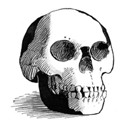
|
|
Boldest Hoax, The
|

|
|
Program Overview
|

|
 NOVA investigates the Piltdown hoax, the people who may have been
involved, and the potential reasons for the forgery.
NOVA investigates the Piltdown hoax, the people who may have been
involved, and the potential reasons for the forgery.
The program:
-
reviews Charles Darwin's 1859 theory of evolution that drove the
hunt to find the "missing link" in human
development—fossil evidence for a species that would
bridge the evolutionary gap between apes and humans.
-
notes that while Germany, Spain, and France all had evidence of
early man, Britain had none.
-
relates how the skull and jawbone found at Piltdown, England, in
1912 were purported to belong to the earliest human ever
discovered.
-
states the early suspicions of some scientists who questioned
the authenticity of the artifacts.
-
reports subsequent finds that supported the legitimacy of the
Piltdown man: a canine tooth discovered in 1913 at the original
site and a second skull and tooth unearthed two years later just
a few miles away.
-
notes how the hoax was exposed in 1953 by Kenneth Oakley, a
scientist whose dating technique revealed the Piltdown artifacts
were not as old as presumed.
-
reports further revelations that the skull had been stained, the
canine tooth painted and filed, other teeth filed flat, and the
jaw obtained from a common orangutan.
-
investigates the potential mastermind(s) of the hoax and what
may have motivated each of them.
-
reviews the case against Sir Arthur Conan Doyle, the mystery
writer whose "Lost World" may contain clues relating to the
hoax.
-
assesses the character of Charles Dawson, an amateur
archeologist who first brought the finds to the attention of the
science community.
-
presents the evidence against Sir Arthur Smith Woodward, a
geologist at the then British Museum of Natural History.
-
explores evidence regarding museum volunteer Martin Hinton's
role in the forgery.
-
theorizes which of the potential instigators might have been
involved with the hoax.
Taping Rights: Can be used up to one year after the program
is taped off the air.
|

|
